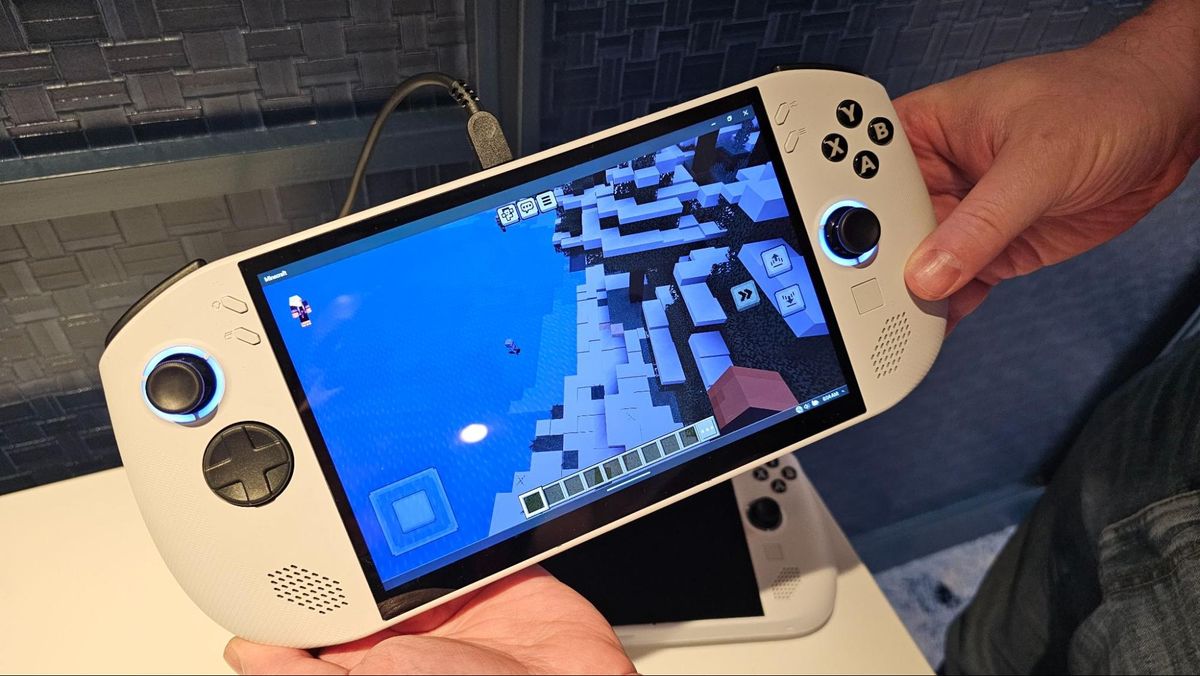Lenovo’s Legion Go S handheld is powered by AMD’s Z2 Go, runs SteamOS or Windows
Legion Go 2 prototype lowers screen resolution, but steps up to OLED and refines controls.

Lenovo’s original Legion Go gaming handheld didn’t exactly get the warmest of receptions when it arrived in mid-2023. But the company is back with three new models here in 2025, all running either the familiar AMD Z1 Extreme processor or the new Z2.
Legion Go S: Powered by SteamOS or Windows 11



The Legion Go S ditches the detachable controllers of the previous Legion Go, in favor of a more traditional (and lighter, at 1.63 pounds) design. The white model runs Windows 11, while a “Nebula Violet” version will ship with Valve’s SteamOS – offering up a simpler and more console-like experience, but making it harder to buy and play games outside of Valve’s ecosystem.
Both models (officially called the Legion Go S and Legion Go S – Powered by SteamOS) feature the same hardware. You get a Z2 or Z1 Extreme processor, an 8-inch 1920x1200 LCD touchscreen (rated at 500 nits and 120 Hz), a 55.5 WHr battery, and up to 32GB of 6400 DDR5 RAM and 1TB of storage. And for those looking to add a roomier drive, Lenovo’s spec sheets indicate standard-sized 2280 M.2 SSDs are supported.
Port selection is comprised of a MicroSD card slot, two USB 4.0 ports up top, and an audio jack. Lenovo says the Windows-powered Legion Go S will be available in January for a starting price of around $729, while the Legion Go – Powered by SteamOS will arrive in May, with an expected starting price of $499. Lenovo adds, though, that additional configurations of the Windows-powered model will be available starting May 2025, with an expected starting price of $599. A company rep told us that, once both are available, you should be able to get a Legion Go S, running Windows or SteamOS, with the same AMD Z2 Go CPU, 16GB RAM, and 1TB Storage, for $599. The $729 Legion Go S running Windows will double the RAM to 32GB.
Legion Go 2 prototype: detachable mouse controller returns
On the higher end of the handheld spectrum, Lenovo also showed off a prototype of a next-gen Legion Go. This version keeps the detachable controllers (including the questionable mouse sensor that lets you turn the right control stick into the world’s least ergonomic gaming mouse), while rounding the edges of the controllers, making the D-pad circular, and upping the battery substantially, from 49.2 to 74 WHr.
The display remains 8.8 inches and 144 Hz, but this time it’s OLED and Lenovo (smartly, IMO) dropped the resolution down from 2560x1600 to a more reasonable 1920x1200. The touch display is also rated for 500 nits of brightness and features variable refresh rate support. Lenovo says the second-gen Legion Go will ship with a Ryzen Z2 and up to 2TB of storage and 32GB of fast 7500 MHz RAM when it arrives sometime in 2025. Port selection was still undetermined when we wrote this.
Stay On the Cutting Edge: Get the Tom's Hardware Newsletter
Get Tom's Hardware's best news and in-depth reviews, straight to your inbox.
After a rough start with the Mattel Aquarius as a child, Matt built his first PC in the late 1990s and ventured into mild PC modding in the early 2000s. He’s spent the last 15 years covering emerging technology for Smithsonian, Popular Science, and Consumer Reports, while testing components and PCs for Computer Shopper, PCMag and Digital Trends.
-
thestryker I wish there were some charts in the article because once again companies are bombarding with random SKUs.Reply
As near as I can tell there's a Steam OS exclusive model at $499 which has 16GB DRAM and 512GB storage.
Moving up to 16GB DRAM and 1TB storage costs $599, but also runs Windows.
Then the top SKU is 32GB DRAM and 2TB storage with Windows at $729.
(seeing conflicting information whether or not Steam OS versions of the more expensive ones are available)
All of these have 1920x1200 displays supposedly with VRR (I say supposedly because it had been listed on their first handheld and then didn't deliver) along with Z2 Go (4c Zen 3 with 12CU RDNA 2) APUs. The Verge is reporting this SoC is exclusive to them, but that might be like the timed Z1E with Asus.
The Verge is also reporting that there will be Z1E versions of the Go S in some regions.
As for the Go 2 since I'm seeing everyone listing the Z2 for APU that indicates it's just a refresh of the Go similar to how the Ally X was to the Ally. This is really making me wonder about availability and/or cost of the Z2E.
Most Popular





